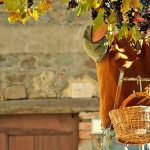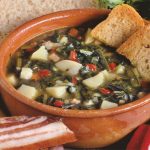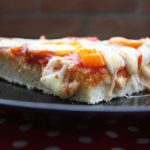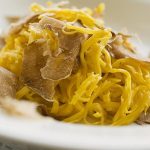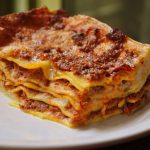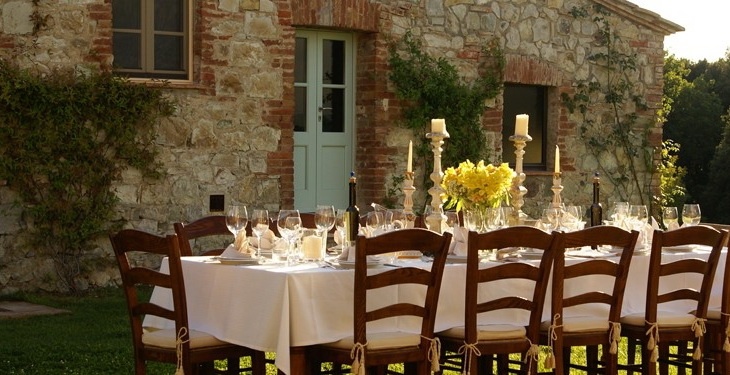
11 Apr 2014 Tuscan Food, Cooking & Recipes by Top 15 Food Blogs of Italy
 It may come as a shock to some that there is really no such thing as “Italian food“: each region of Italy is known for particular ingredients and a certain style of cooking. Tuscan food is hearty and straightforward. It’s simple–flavorful, but not showy or fancy. Fresh, high-quality ingredients are necessities, and such concepts as “artisanal” and “free range” are second-nature to most Tuscans.
It may come as a shock to some that there is really no such thing as “Italian food“: each region of Italy is known for particular ingredients and a certain style of cooking. Tuscan food is hearty and straightforward. It’s simple–flavorful, but not showy or fancy. Fresh, high-quality ingredients are necessities, and such concepts as “artisanal” and “free range” are second-nature to most Tuscans.
 Meals typically begin with an antipasto (starter) of regionally-produced cured meats, such as salame (salami), prosciutto (ham), and sopressata (brawn). Bread, which is eaten every day by Tuscans, is often part of the antipasto. It is made into crostini (croutons), usually with patè, or bruschetta, with olive oil, salt, and sometimes tomatoes.
Meals typically begin with an antipasto (starter) of regionally-produced cured meats, such as salame (salami), prosciutto (ham), and sopressata (brawn). Bread, which is eaten every day by Tuscans, is often part of the antipasto. It is made into crostini (croutons), usually with patè, or bruschetta, with olive oil, salt, and sometimes tomatoes.
The first course, or primi, consists of soup or pasta. Tuscans dislike wasting food, so stale bread is often used in soups. Pappa al pomodoro, pasta with tomato soup, and ribollita, a peasant bread soup prepared the day before serving, are delicious uses for yesterday’s leftovers.
Pasta isn’t as popular in Tuscany as it is in other regions of Italy. In fact, factory-made pasta has become a staple only in recent years. Two true centuries-old Tuscan pastas are tortelli (Tuscan ravioli) and pici, a small and thin pasta made with eggs. Fresh pappardelle, while not traditionally Tuscan, is often enjoyed with a rich sauce made from hare or wild boar.
 Tuscans love meats, which are served in the secondi, or main course. Italy’s most prominent steak dish, the thick, wood-fire-grilled bistecca alla fiorentina, is traditionally made from the beef of Chiana cattle raised in Florence, long been known for its leather goods. Wild and domesticated game, mixed grills, fritto misto (battered and fried meats and vegetables), and roasted chicken are also served. Along the coast, seafood is popular.
Tuscans love meats, which are served in the secondi, or main course. Italy’s most prominent steak dish, the thick, wood-fire-grilled bistecca alla fiorentina, is traditionally made from the beef of Chiana cattle raised in Florence, long been known for its leather goods. Wild and domesticated game, mixed grills, fritto misto (battered and fried meats and vegetables), and roasted chicken are also served. Along the coast, seafood is popular.
Basil, sage, and rosemary are used to flavor many foods. Beans, often cooked in earthenware pots and doused with olive oil, feature prominently in Tuscan contorni (side dishes), as do spinach and tomatoes. Other side dishes may include potatoes, eggplant, artichokes, and bell peppers. As expected, extra vergin olive oil is used liberally in a great many Tuscan recipes. Truffles, those expensive, earthy mushrooms prized by many foodies, are used as garnishes to flavor some dishes and oils.
 For dessert (dolci), it may be gelato (ice cream), biscotti (cookies), or the dense Sienese Panforte (gingerbread). Wine is served at every meal. Tuscan wines are versatile and understandably-popular around the world. Full-bodied Chianti, Montepulciano, and Brunello pair well with rich Tuscan foods.
For dessert (dolci), it may be gelato (ice cream), biscotti (cookies), or the dense Sienese Panforte (gingerbread). Wine is served at every meal. Tuscan wines are versatile and understandably-popular around the world. Full-bodied Chianti, Montepulciano, and Brunello pair well with rich Tuscan foods.
Tuscan food blogs provide an entertaining and informative insight into Tuscan recipes and lifestyles. Here are our fifteen favorites.
Gabriele Corcos, an Italian whose mother is the “Tuscan Gun,” writes in a witty, relatable style about cooking for his wife and two young daughters in Brooklyn. He and his wife, the actress Debi Mazar, have a show on the Cooking Channel and have written a cookbook, Extra Virgin: Recipes and Love from Our Tuscan Kitchen. They’re also renovating a Tuscan farming estate.
This blog by Intoscana (Tuscany for Sustainable Tourism) contains a variety of food topics, from ancient Etruscan recipes to pairing and cooking with craft beers. There’s a restaurant dictionary and a wonderful section on food-related itineraries in Tuscany that can be managed without a tour guide. Gorgeous photos of food and places fill Tuscanycious.
A true globetrotter, Emiko lived in Tuscany for seven years and now writes about traditional Italian foods, many of them Tuscan. Emiko is an accomplished photographer and illustrator who has been called the “Renaissance woman for the internet era” by Food52’s Amanda Hesser.
Guilia Scarpaleggia is a full-time food blogger who has always lived in the Tuscan countryside. Guilia shares her recipes and also dishes on favorite Tuscan restaurants and area agriturismo producers. Recipes can be searched by ingredient, which is a helpful feature uncommon to many food blogs. Guilia even offers cooking classes in her country house kitchen.
Judy lives in the hills outside Certaldo, between Florence and Siena, where she runs cooking classes and culinary walking tours. There are links to her Chianti Food & Wine app and to her cookbook, Divina Cucina’s Recipes.
Sara Milletti’s passion for Tuscan food is apparent in this Italian-language blog. She enjoys cooking challenges using certain ingredients. Follow along with Sara’s 60-day #fairyfoodtour of Italy.
Simona Cherubini is an Italian slow-living proponent who cooks with her heart, not just her hands. She shows the messy, everyday side of real Tuscan cooking. Simona makes a connection between good eating and a healthy emotional life.
Fun and creative, Erica Ferreri’s blog has recipes arranged by courses and accompanied by quality styling and photography. Erica shares many fascinating pasta recipes, in particular, but her scope of recipes also extends globally.
Tuscan friends Simona and Claudia share both traditional and new recipes, arranged by courses. Outstanding desserts feature prominently. The wide variety of recipes is impressive. These friends don’t shy away from the complicated or unusual.
The adorable “Potato in a Jacket” deals with special diets, travel, holidays, and personal challenges in a fun and inspiring way. Gaia shares her love of photography and everything kitchen-related. Her writing is entertaining, and her belief in a strong food culture is clear.
Via a clean and simple design, the Florentine Chiara shares recipes and travel guides from around the world. She’s a busy mom with an adventurous spirit. Her passionate curiosity is infectious.
After becoming a mother, Maddy began to derive great satisfaction from cooking for her family. Cooking engages her body and mind, and she blogs about everyday moments as well as recipes. Large, vivid photos accompany Maddy’s mouth-watering “kitchen experiments.”
Serena’s recipes are homey, hearty, and accessible. Her photos exhibit a sweet country style. She agrees with TV mom Bree Van de Kamp that there is always an opportunity to do something good, even if it is “just a simple pie.”
Arezzo-based Sofia wins fans with restaurant reviews, global recipes, and a cute blog design that’s easy to navigate. Her tagline states that “to make an omelet, you first have to break an egg.”
Tuscan blogger Francesca emphasizes the importance of a strong food and wine culture. Her blog, full of stunning food styling and recipes, focuses primarily on desserts. For Francesca, “the black fig weaves memories, tastes, and seasons.”


